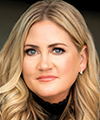 |
| Lindsey Carnett |
Two years of isolation, working from home and a limited amount of in-person social interaction have impacted how we eat, exercise and manage a healthy lifestyle. Today, consumers are more conscious of the importance of staying active, and the pandemic has, in some circumstances, forced us to make changes to our diet, introduced supplements to our daily routines and, generally, has overhauled our approach to health and fitness.
So, while the pandemic has reformed the way many of us take care of our health, for brands, it has brought about a seismic change in the way they can market products. It has also introduced new opportunities for product development and methods for targeting new customers.
Perhaps you’re an individual who contracted COVID and suffering from the after-effects of the virus. Or maybe you’re concerned about getting COVID, the virus giving a sudden wake-up call to make a change and improve health and fitness. Whatever the situation, the pandemic has provided companies and their marketing professionals with an opportunity to make a difference and capitalize on gaps in the market.
| This article is featured in O'Dwyer's Mar. '22 Food & Beverage PR Magazine (view PDF version) |
And what about existing customers? For those who’ve been steadfast in their support for a brand for many years, the pandemic has been an opportunity not only for brands to maintain their loyalty, but to tighten it, perhaps through trying new product variations and loyalty discounts.
For ambitious new brands, their challenge during the pandemic has been to carve out a niche and to figure out what’s so unique about them and why customers would need their products or support at such a turbulent time.
Golde is an example of a relatively new brand to the market. Very much targeted towards the Millennial consumer, the superfood brand looks to inspire its customers and has a Club Golde promotion, where customers can sign up to be brand ambassadors and share their health and wellbeing tips and tricks. Like with other initiatives, this group will have provided a welcome sense of community during the pandemic.
During the pandemic, we’ve seen an uptick in consumers introducing vitamins to their diet. As reported at the American Herbal Products Association’s AHPA Botanical Congress, sales of supplements in the U.S. increased by $7.08 billion, reflecting 14.5 percent growth. The total valuation of the market was $55.75 billion in 2020.
Vitamins experienced a 22.3 percent sales growth as consumers embraced introducing vitamins C and D into their diet. Herbals and botanicals experienced similar growth. With this boom in popularity, it’s evident that PR professionals need to find new approaches to persuade and target consumers. This doesn’t mean just dusting off the same techniques and slogans. Onboarding with product education is a vital starting point. Understanding the benefits, restrictions and opportunities that a particular product can bring to a consumer’s diet and way of life should be the very minimum that a PR professional understands. How else can you accurately and correctly market a product to a consumer otherwise?
Professionals representing the brand should truly immerse themselves in the product. So, for supplements, they should take a trial of them to see if they improve their health. For products designed to aid workouts, trying the supplements alongside their exercise routine will help in determining the health benefits from their experience. With that said, you can’t truly understand something until you’ve experienced it.
In addition, it’s very important for professionals to engage with scientific research. Speaking with experts and “deep-diving” into how the products are made is a great way to understand at a greater level how the product works and can add a deeper edge to the marketing and communications campaign.
Many PR agencies work with health and fitness influencers to market products. This technique helps in building a level of trust, creates brand familiarity and is an effective way of building brand loyalty and awareness. Millennials and Gen Z, in particular, are avid users of Instagram, a particularly effective platform for targeting younger consumers interested in maintaining their health and wellbeing.
As consumers shift to buying more products online, marketers should be savvy in the way they use digital technology to promote supplements. The NBJ predicts e-commerce sales are expected to more than double between 2019 and 2024, reaching 24 percent by 2024, demonstrating the anticipated permanent shift in consumer behavior. To capitalize on this trend, marketers should offer exclusive online meet-and-greets with influencers or mix it up with Zoom calls that enable customers to ask the scientists and brands themselves about their products.
It’s clear that the health and wellbeing industry will continue to experience growth and popularity as we return to a new way of living after the pandemic. COVID-19 has been devastating for many industries, but for supplements, it has created new opportunities and new customer segments for PR professionals to target. Consumers have woken up to the power of keeping well and are looking for brands that enable community and connection to help them reach their goals. For marketers to win their trust—and their dollar—they need to truly understand what they want. Immersing themselves in the products they represent is the best way of doing this.
***
Lindsey Carnett is CEO and President of Marketing Maven.


 What the biggest meal of the day can teach us about serving up effective nutrition communications campaigns.
What the biggest meal of the day can teach us about serving up effective nutrition communications campaigns. Tips to refine and amplify your CPG brand strategy to win in 2024 and beyond.
Tips to refine and amplify your CPG brand strategy to win in 2024 and beyond. Strategic communications strategies for success in the growing “food is medicine” movement.
Strategic communications strategies for success in the growing “food is medicine” movement. How brands can authentically communicate sustainability issues and create a brand experience that’s compatible with consumers’ values.
How brands can authentically communicate sustainability issues and create a brand experience that’s compatible with consumers’ values. Communicating the effects that climate change and a growing world population have on our food system—and why change is needed.
Communicating the effects that climate change and a growing world population have on our food system—and why change is needed.


 Have a comment? Send it to
Have a comment? Send it to 
No comments have been submitted for this story yet.